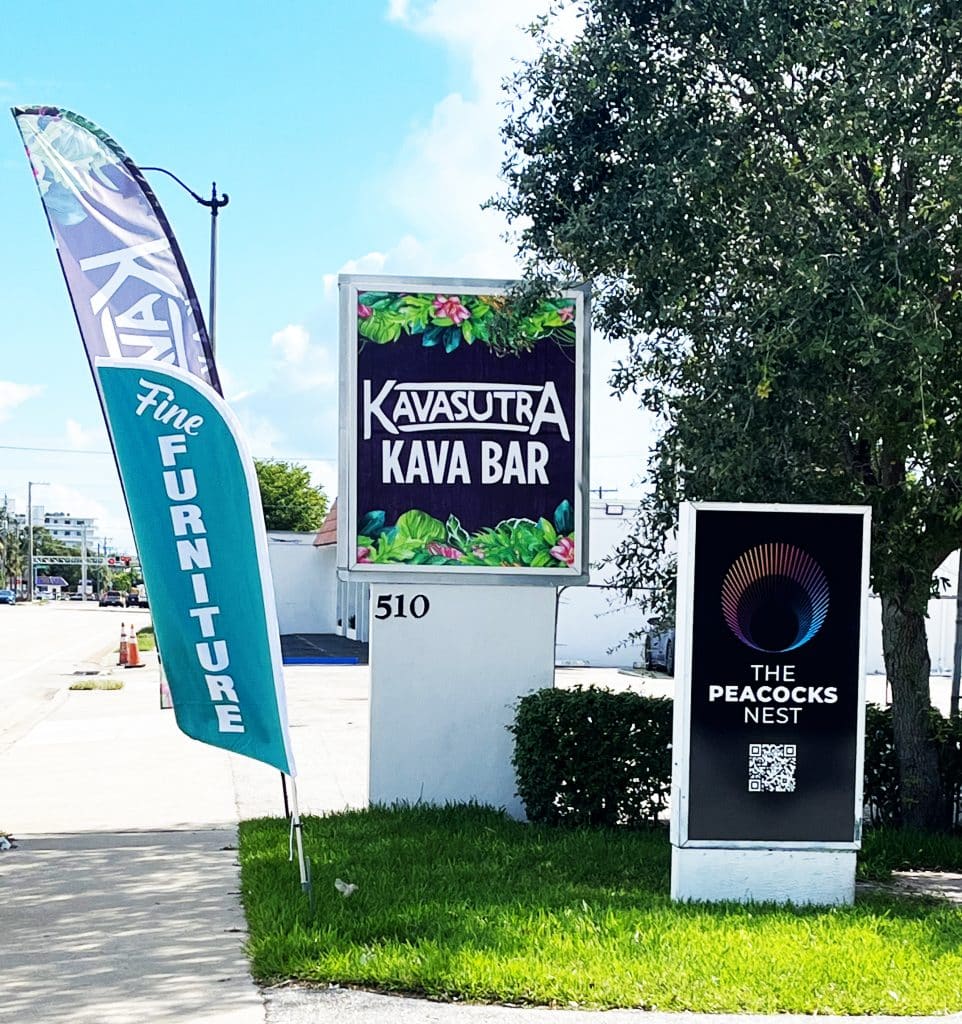Flags vs Banner
In the world of advertising, the choice of medium can significantly impact the effectiveness of your message. Flags and banners both stand as versatile tools for outdoor marketing, but understanding their differences and knowing when to use each can make a substantial difference in grabbing attention and conveying your brand’s message.
Flags
Flags, with their vibrant colors and unique shapes, are exceptional for outdoor visibility. Placed strategically, they attract attention, effectively serving as beacons for businesses. Whether it’s outside retail stores, at events, or along busy streets, flags draw the eye, helping customers identify and remember brands.
For businesses running special promotions, sales, or events, flags are unbeatable attention-grabbers. Their movement in the wind and conspicuous placement can effectively convey the urgency and excitement of limited-time offers or exclusive deals.
Flags play a vital role in providing directional guidance, especially in settings like festivals, conventions, or large gatherings. Their height and visibility make them ideal for guiding people to specific areas, booths, or entry points.
Using flags with logos or brand-specific designs helps in reinforcing brand recognition. Placed strategically, they become visual reminders of your business, imprinting your brand into the minds of passersby. In the realm of events and exhibitions, flags are indispensable. They not only help in marking event locations but also in creating a festive atmosphere, drawing attention to sponsor booths or key areas.
Flags offer the advantage of portability. They can be easily transported and set up in various locations, making them perfect for businesses that operate in different places or participate in mobile events like fairs or pop-up markets.
Flags are adaptable for seasonal promotions or holiday-themed advertising. They can be customized to match specific occasions, adding a touch of festivity, and attracting customers looking for seasonal offerings.
Their height makes flags useful for guiding people to an event or a particular area within a larger space, like a festival or fairground. Flags with logos or brand-specific designs can enhance brand visibility, especially when placed outside business premises or at trade shows. Due to their portability and ease of setup, flags are perfect for temporary or mobile advertising needs.
If you would like to check out our flags, please click here.
They are durable and can withstand various weather conditions, making them ideal for prolonged outdoor use. When aiming for a significant visual impact, such as covering a building or displaying across larger spaces, banners are the go-to choose.
For businesses aiming for a grand visual impact, banners offer the ideal platform. They can cover building facades, adorn event spaces, or span across larger areas, significantly enhancing brand visibility and recognition.
In scenarios where detailed information is crucial, such as educational campaigns, instructional guides, or complex product specifications, banners excel in delivering comprehensive messages effectively.
Banners are commonly used in trade show booths or exhibitions where they can display product information, services, or brand stories attractively. banners shine as essential marketing tools. They serve as backdrops, booth decorations, or standalone displays, effectively showcasing products, services, and brand narratives.
If you would like to check out our banners, please click here.
Choosing the Right One
Determine where the advertisement will be placed. For high-traffic areas or events, flags might be more attention-grabbing. For more information-centric spaces, banners could be better.
Consider the length and complexity of your message. If it’s concise and primarily visual, a flag might be best. For detailed information, a banner provides the necessary space. Flags are more suitable for short-term promotions, while banners can endure for more extended periods. Flags can attract attention from a distance, drawing people toward the location, while banners placed closer can provide detailed information once potential customers are in closer proximity.
In some cases, a combination of both might be the most impactful strategy, utilizing flags for visibility from a distance and banners for detailed information up close. Flags and banners, when designed to complement each other, can enhance the visual appeal of the advertising space, making it more attractive and memorable.
In conclusion, both flags and banners serve as valuable tools in the advertising arsenal, each with its own strengths and best-suited scenarios. Understanding their differences and assessing your specific advertising needs will help you choose the right medium to effectively communicate your message and capture the attention of your audience.



